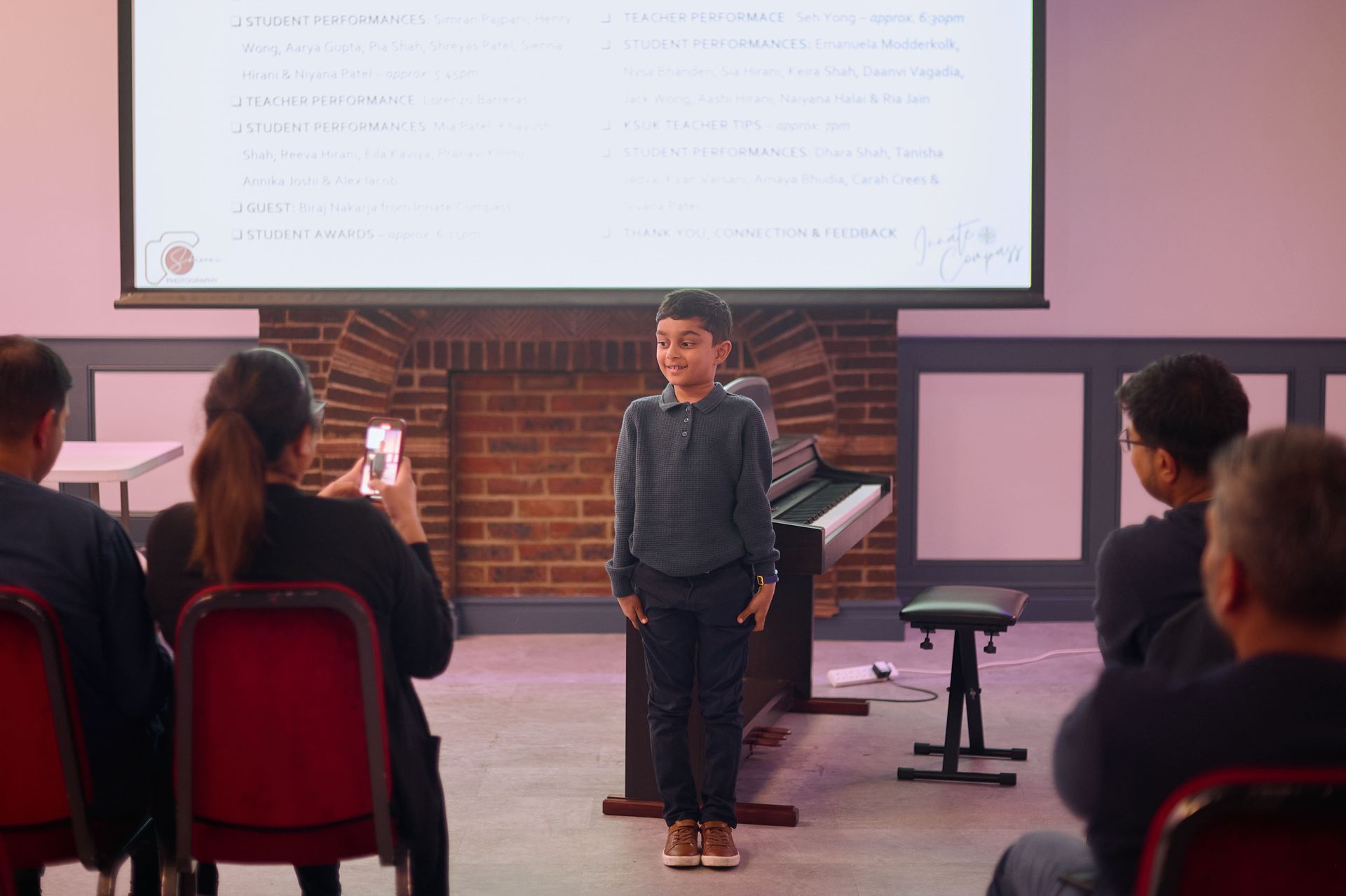December 11, 2025
It’s a familiar situation for many parents: your child loves their piano lessons. They come out smiling, talk excitedly about new songs, and sometimes even play little tunes at home just for fun. But when it comes to actual practice time…things suddenly feel a lot harder. Maybe they avoid it. Maybe they forget. Maybe they do a few minutes and wander off. And you start wondering: “Do they really enjoy this?” “Are we wasting time or money?” “Shouldn’t they be practising more if they like it?” Take a deep breath - this phase is incredibly common. Children can genuinely enjoy learning piano and still struggle to practise regularly. They’re often not being lazy. They’re simply figuring out how to build a new habit in the midst of a busy, ever-changing routine. Here’s how you can gently support them through this stage while keeping piano enjoyable and meaningful. 1. Notice the Signs of Enjoyment That Happen Outside Practice Time Children don’t always show enthusiasm in predictable ways. Even if formal practice is inconsistent, you’ll often see subtle signs that they’re still engaged: They hum or sing their piano pieces They sit at the piano and explore sounds They talk positively about lessons They remember melodies long after learning them They show excitement about a favourite song These small behaviours mean that music is sticking - even if the practice routine isn’t perfect..yet! 2. Remember That Building a Routine Takes Time Adults know how hard forming habits can be - and for children balancing schoolwork, homework, activities, and social events, it’s even tougher. Some weeks they’re on track. Other weeks they’re overwhelmed or tired. And sometimes they’re simply distracted by being…well, kids. This inconsistency doesn’t mean piano isn’t important to them. It means they’re learning how to integrate it into their life, one step at a time. 3. Keep Practice Short and Doable You don’t need long practice sessions to see progress. In fact, shorter sessions often work better for children with full schedules. Aim for: 10 minutes of focused practice One section of a song they are struggling on A flashcard set Practising 4 times per week rather than 7 - to start off with! This approach feels achievable for your child and reduces the stress of “fitting it in.” 4. Offer Light Homework on Busy Weeks If your child is buried under schoolwork or just having an off week, switching to “gentle homework” keeps them connected without pressure. Try: Listening to their piece Practising just the first few bars Reviewing note flashcards for 4-5 minutes These tiny touches still reinforce learning. 5. Encourage Them to Send a Quick Video When They’re Stuck If your child hits a tricky spot, it’s tempting to Google solutions — but online methods often contradict what they’re learning, which creates confusion. A much better approach: Record a short clip of the problem area Send it to the teacher Let the teacher provide the right explanation or resource This gives your child reassurance, keeps them progressing correctly, and removes the frustration that leads to practice avoidance. 6. Keep Piano a Positive Space at Home Children thrive when they feel supported, not judged or pressured. You can help by: Showing interest in what they’re learning Keeping comments relaxed and encouraging Letting them explore the piano freely after practice - this will keep them at the piano for longer! A warm atmosphere builds confidence and long-term enjoyment. 7. Create a Routine That Fits Naturally Into Family Life Consistency doesn’t have to mean rigidity. The best routines feel calm, predictable, and simple. Some easy ideas: Practise right after a snack Use a gentle 10-minute timer Keep the piano area tidy and inviting Display books where they’re easy to grab Tie practice to an existing habit (“after homework,” “before dinner,” etc.) Routines work best when they feel natural rather than forced. If your child enjoys the piano but struggles to practise regularly, it doesn’t mean something is wrong. It simply means they’re learning to balance music with the rest of their busy life. With your encouragement, flexible expectations, and gentle guidance, they will continue to make meaningful progress - even if the practice routine isn’t perfect yet. What matters most is that they feel supported, confident, and excited to keep going. If you have any questions please feel free to reach out!




